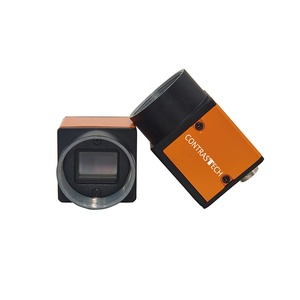Introduction to Line Scan Cameras
In the realm of high-tech imaging, line scan cameras stand out as essential tools in various industrial and scientific applications. Unlike traditional area scan cameras, which capture image data from an entire scene at once, line scan cameras capture images one line at a time. This technology is particularly suitable for monitoring continuous processes such as web inspection, food and beverage production, and other manufacturing lines. The unique operating mechanism of line scan cameras allows them to deliver higher resolution images over larger areas, making them invaluable in settings where precision and speed are critical.
Types of Line Scan Cameras
Line scan cameras come in several types, each designed for specific applications and functionalities. Understanding these can help businesses choose the right model for their needs.
- Monochrome Line Scan Cameras: Ideal for high contrast applications, these cameras produce images in shades of gray, allowing for precise detail detection.
- Color Line Scan Cameras: These cameras capture images in full color and are perfect for applications where color differentiation is critical, such as in food safety inspection.
- HD Line Scan Cameras: High-definition models that provide exceptional detail and clarity, suitable for demanding tasks like semiconductor inspection.
- Multi-Spectral Line Scan Cameras: These advanced versions capture multiple wavelengths of light, enabling detailed analysis for applications in agriculture and materials science.
Applications of Line Scan Cameras
The applications of line scan cameras are vast and varied, reflecting their versatility and efficiency. Here are some prominent use cases:
- Web Inspection: Line scan cameras are routinely used to inspect continuously rolling materials, such as paper, film, and metal sheets, ensuring that defects are identified promptly.
- Food Industry: In food processing, they assist in inspecting products for foreign objects, inconsistencies in appearance, and even monitoring packaging integrity.
- Textile Industry: They play a crucial role in the textile manufacturing process by detecting faults in fabrics as they move through the production line.
- Automotive Industry: Used for quality control of components and assemblies, ensuring that all aspects of parts meet strict tolerances.
- Electronics Manufacturing: They help in inspecting PCB boards and components for defects or contaminants, ensuring superior product quality.
Features and Advantages of Line Scan Cameras
The features of line scan cameras are designed to deliver unparalleled performance and address the challenges of high-speed production lines. Here are key features and advantages:
- High-Speed Imaging: These cameras can achieve rapid image capture rates, crucial in fast-paced production environments.
- High Resolution: They offer exceptional detail, even in high-contrast situations, making them excellent for precision applications.
- Flexible Integration: Line scan cameras can be easily integrated into existing production lines with minimal disruption.
- Compact Design: Their slim profile enables installation in tight spaces where traditional cameras might be too bulky.
- Robust Construction: Many models are designed to withstand harsh industrial conditions, ensuring longevity and reliability.














































